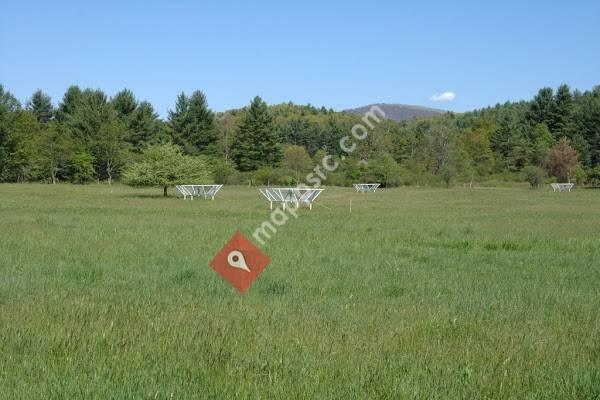



The Robert C. Byrd Green Bank Telescope (GBT) in Green Bank, West Virginia, US is the world's largest fully steerable radio telescope. The Green Bank site was part of the National Radio Astronomy Observatory (NRAO) until September 30, 2016. Since October 1, 2016, the telescope has been operated by the newly separated Green Bank Observatory. The telescope honors the name of the late Senator Robert C. Byrd who represented West Virginia and who pushed the funding of the telescope through Congress.The Green Bank Telescope operates at meter to millimeter wavelengths. Its 100-meter diameter collecting area, unblocked aperture, and good surface accuracy provide superb sensitivity across the telescope's full 0.1–116 GHz operating range. The GBT is fully steerable, and 85% of the entire celestial sphere is accessible. It is used for astronomy about 6500 hours every year, with 2000–3000 hours per year going to high-frequency science. Part of the scientific strength of the GBT is its flexibility and ease of use, allowing for rapid response to new scientific ideas. It is scheduled dynamically to match project needs to the available weather. The GBT is also readily reconfigured with new and experimental hardware. The high-sensitivity mapping capability of the GBT makes it a necessary complement to the Atacama Large Millimeter Array, the Expanded Very Large Array, the Very Long Baseline Array, and other high-angular resolution interferometers. Facilities of the Green Bank Observatory are also used for other scientific research, for many programs in education and public outreach, and for training students and teachers.
 Green Bank Observatory
1 miles
Incredible research going on here. Make sure you go on the tour to see the GBT up cl...
Green Bank Observatory
1 miles
Incredible research going on here. Make sure you go on the tour to see the GBT up cl... Citizens Bank of West Virginia
11 miles
I've banked with 2 of Elkins' large banks and Citizens is by far the best - their sta...
Citizens Bank of West Virginia
11 miles
I've banked with 2 of Elkins' large banks and Citizens is by far the best - their sta... Pendleton Community Bank
19 miles
Pendleton Community Bank
19 miles
 Citizens Bank of West Virginia
29 miles
Citizens Bank of West Virginia
29 miles
 Pendleton Community Bank
31 miles
Pendleton Community Bank
31 miles
 Freedom Bank
33 miles
Freedom Bank
33 miles
 United Bank
39 miles
United Bank
39 miles
 Freedom Bank Inc
41 miles
Live real close to this bank family has been banking there for 15 years or more.
Freedom Bank Inc
41 miles
Live real close to this bank family has been banking there for 15 years or more. Freedom Bank
43 miles
Freedom Bank
43 miles
 Chase Bank
44 miles
Since Chase shut down their drive through ATM you now have to make sure you are at th...
Chase Bank
44 miles
Since Chase shut down their drive through ATM you now have to make sure you are at th... Freedom Bank
51 miles
Freedom Bank
51 miles
 Premier Bank
53 miles
Premier Bank
53 miles
 City National Bank
55 miles
City National Bank
55 miles
 Pendleton Community Bank
55 miles
Pendleton Community Bank
55 miles
to add Green Bank Telescope map to your website;
We use cookies and other tracking technologies to improve your browsing experience on our website, to show you personalized content and targeted ads, to analyze our website traffic, and to understand where our visitors are coming from. Privacy Policy